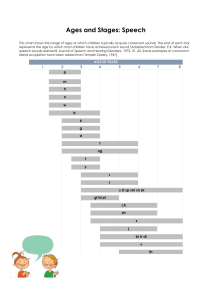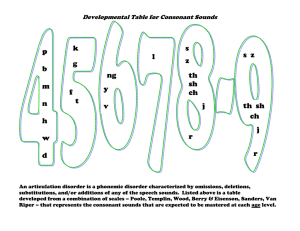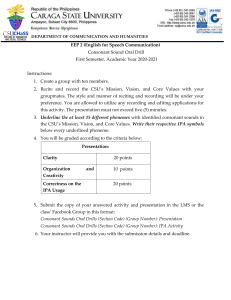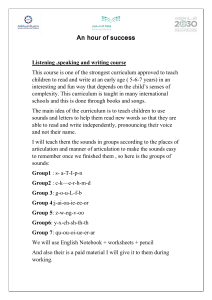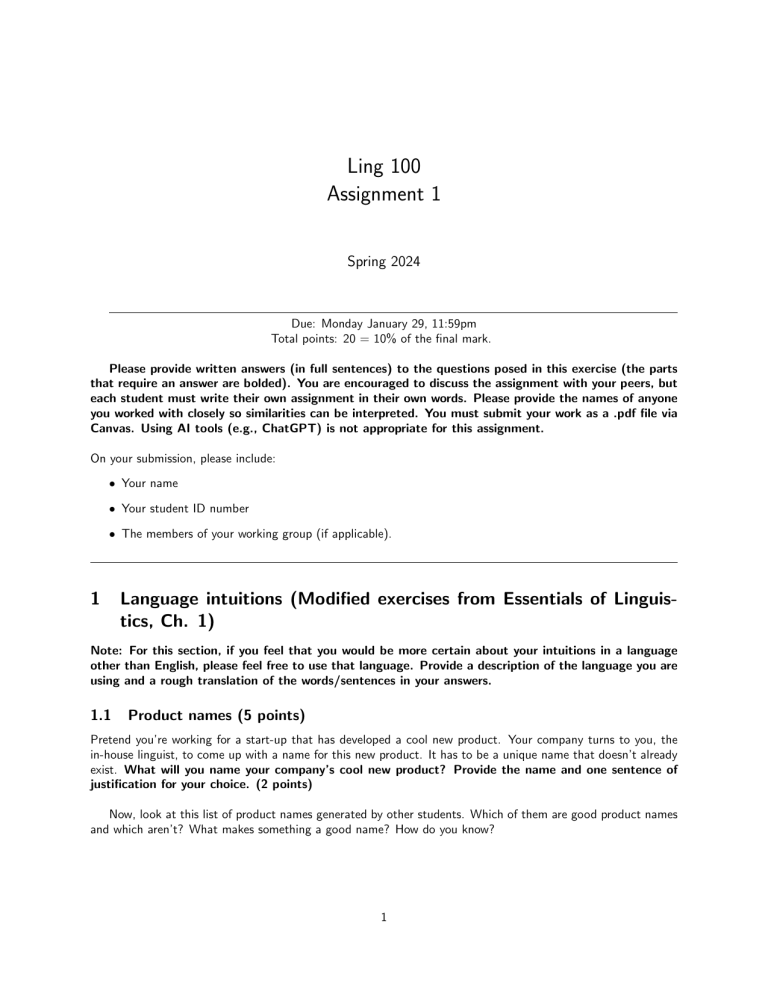
Ling 100 Assignment 1 Spring 2024 Due: Monday January 29, 11:59pm Total points: 20 = 10% of the final mark. Please provide written answers (in full sentences) to the questions posed in this exercise (the parts that require an answer are bolded). You are encouraged to discuss the assignment with your peers, but each student must write their own assignment in their own words. Please provide the names of anyone you worked with closely so similarities can be interpreted. You must submit your work as a .pdf file via Canvas. Using AI tools (e.g., ChatGPT) is not appropriate for this assignment. On your submission, please include: • Your name • Your student ID number • The members of your working group (if applicable). 1 Language intuitions (Modified exercises from Essentials of Linguistics, Ch. 1) Note: For this section, if you feel that you would be more certain about your intuitions in a language other than English, please feel free to use that language. Provide a description of the language you are using and a rough translation of the words/sentences in your answers. 1.1 Product names (5 points) Pretend you’re working for a start-up that has developed a cool new product. Your company turns to you, the in-house linguist, to come up with a name for this new product. It has to be a unique name that doesn’t already exist. What will you name your company’s cool new product? Provide the name and one sentence of justification for your choice. (2 points) Now, look at this list of product names generated by other students. Which of them are good product names and which aren’t? What makes something a good name? How do you know? 1 Ling 100 mentocular jibberdab kzen Spring 2024 swoodiei keerild zirka torrix euquinu hbiufk baizan tuitionary fluxon Choose one good product name and bad product name, and for each one write a sentence describing why it is/isn’t good. Write one concluding sentence about what makes something a good name. (3 points) 1.2 New verbs (6 points) One of the many ways that mental grammar is generative is that it is always possible to create new words in a language. English often allows the creation of new verbs from existing nouns, even from proper names like in the following sentences: • We’re going to Uber to the airport this time rather than driving. • You can find out the answer by Googling. • The kids got Pfizered before going back to school. Create three new verbs from English nouns (common nouns or proper names). Provide a definition of each one and use it in a sentence to illustrate its meaning. (2 points each = 6) 2 Speech sounds Phonetic inventory (5 points) Each language has its own phonetic inventory. In other words, the set of sounds used in one language may be different from the sounds used in other languages. The (simplified) inventory of consonants in Burmese is [ p, b, t, d, k, g, P, m, n, ñ, N, ð, T, s, z, S, h, Ù, Ã, ì, ô, j, l]. 1. Identify three consonants that are present in the consonant inventory of Burmese but NOT in the consonant inventory of English. For each of these sounds, use the IPA chart to state its place of articulation, manner of articulation, and voicing. (i) (ii) (iii) 2. Identify two sounds that are present in the consonant inventory of English that are not present in the inventory of Burmese. For each of these sounds, use the IPA chart to state its place of articulation, manner of articulation, and voicing. (i) (ii) 3 Attitudes and accents (4 points) Think of a public figure (could be an influencer, actor, or even a fictional character) who has an accent that is different from yours. You could be thinking of an accent that differs from your English accent or your accent in your first language, if that is not English. Find a YouTube clip of the speech of this person or character and include it in your assignment. Then provide: 2 Ling 100 Spring 2024 • One example of a consonant that differs in its production between the public figure’s accent and yours. Provide: – A word that demonstrates this difference. – The timestamp in the video where this word is produced. – A description of your way of producing this word vs. the public figure. – The IPA symbols for your pronunciation and the public figure’s. • One example of a vowel that differs in its production between the public figure’s accent and yours. Provide: – A word that demonstrates this difference. – The timestamp in the video where this word is produced. – A description of your way of producing this word vs. the public figure. – The IPA symbols for your pronunciation and the public figure’s. 3

